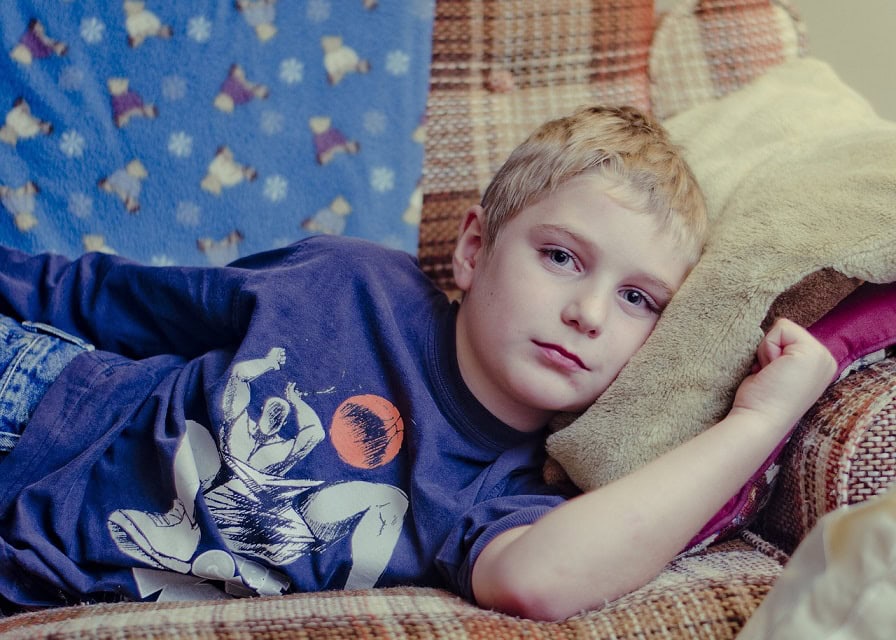In the heady whirlwind called parenting, we juggle a million tiny worries. Are they eating enough broccoli? Are they reading at their grade level? Will they remember to look both ways while crossing the street – and does it count if they’re on a bicycle?
Among these breeze-shifting concerns is the often delicate subject of childhood anxiety, something many of us experienced in some form as kids. But spotting it in our own children can feel as elusive as catching moonlight in a jar. Here’s a flashlight to lead the way.
Understanding Childhood Anxiety
Anxiety in children can be as varied and complex as it is in adults. Sometimes, it stems from tangible fears – the monsters in the closet, the big bad under the bed. Other times, it’s a little more abstract – the fear of letting you down, the creeping sensation of not fitting in at school.
Here’s the thing with anxiety in kids – sometimes, it’s not about facing their fears, but about facing their own thoughts. Their young minds, though wonderfully imaginative, can often work themselves into a lather of worries and ‘what ifs’ that they struggle to articulate.
Common Signs of Anxiety in Children
Some signs of anxiety are as straightforward as a dash in the 100-meter final. The problem, of course, is that the final isn’t always raging anxiety; it’s more like hiding behind every door, window, and quiet moment in a kid’s life.
Here’s a bullet list of the bold signs to look out for:
- Restlessness and difficulty focusing
- Regular stomach aches or headaches, often with no apparent physical cause
- A sudden dread of school attendance or homework
- Frequent perfectionism or self-criticism that goes beyond healthy ambition
Less Well-Known Signs of Anxiety in Children
The subtle signs are just as important, if not crucial. Picture anxiety as a stealthy spy, weaving its way through the daily routine. Keep your parental periscope up for these less well-known signals:
- Excessive worry or avoidance of situations that may trigger their fears
- Increased tearfulness and emotional sensitivity to stimuli
- Difficulty sleeping or staying asleep, often accompanied by nightmares
- A significant change in eating habits, from overeating to loss of appetite
“Knowing the enemy is half the battle,” as G.I. Joe used to say. There’s no exception when it comes to the anxieties our children face.
Supporting Children with Anxiety and Sleep Disorders
For children grappling with anxiety, sleep can become the battleground where fears and worries refuse to cease combat operations.
The Crucial Connection
Anxiety and sleep disorders are sometimes locked in a tandem dance. Poor sleep can exacerbate anxiety symptoms, which in turn affects sleep quality.
Strategies for Peaceful Slumber
Simple bedtime routines, soothing fans, and the occasional monster-slaying in a kid’s room can be part of the toolkit to help your child sleep better and, in turn, cope better with their anxiety.
If you’re in Austin and are worried your child is showing the above symptoms, contacting a therapist specialized in handling anxiety and sleep problems can help. Rula has compiled a comprehensive list of Austin therapists, specializing in stress, anxiety management, and handling different types of sleep disorders that can be of help to you.
When to Seek Professional Help
When those signs of anxiety don’t just ‘go away,’ it’s time to consider stepping out of the role of parent and into your other important role as their protector. If you notice any of the following, it’s likely time to pick up the bat phone:
- Anxiety that’s persistent and lasts for weeks or months
- Interference with daily activities or social interactions
- The physical symptoms becoming too frequent and severe
I won’t paint it as an easy step to take – seeking help always feels like an admission of defeat. But it’s quite the opposite. It’s the first step towards victory – towards helping your child understand their feelings, no matter how big or small, are valid and valued.
Conclusion
Parenting is an expedition of the heart, full of discovery and surprises – some heartwarming, others heart-stopping. In this digital age where our kids can juggle apps better than they can button their shirts, it’s crucial for us to slow down and really see them – beyond the screen glare and emoji smileys.
By understanding and recognizing the signs of anxiety, we are better equipped to support our children through this silent struggle. It’s a quest we’re on together, and through love, patience, and a bit of parental magic, we’ll help our young ones thrive in spite of the shadows.









